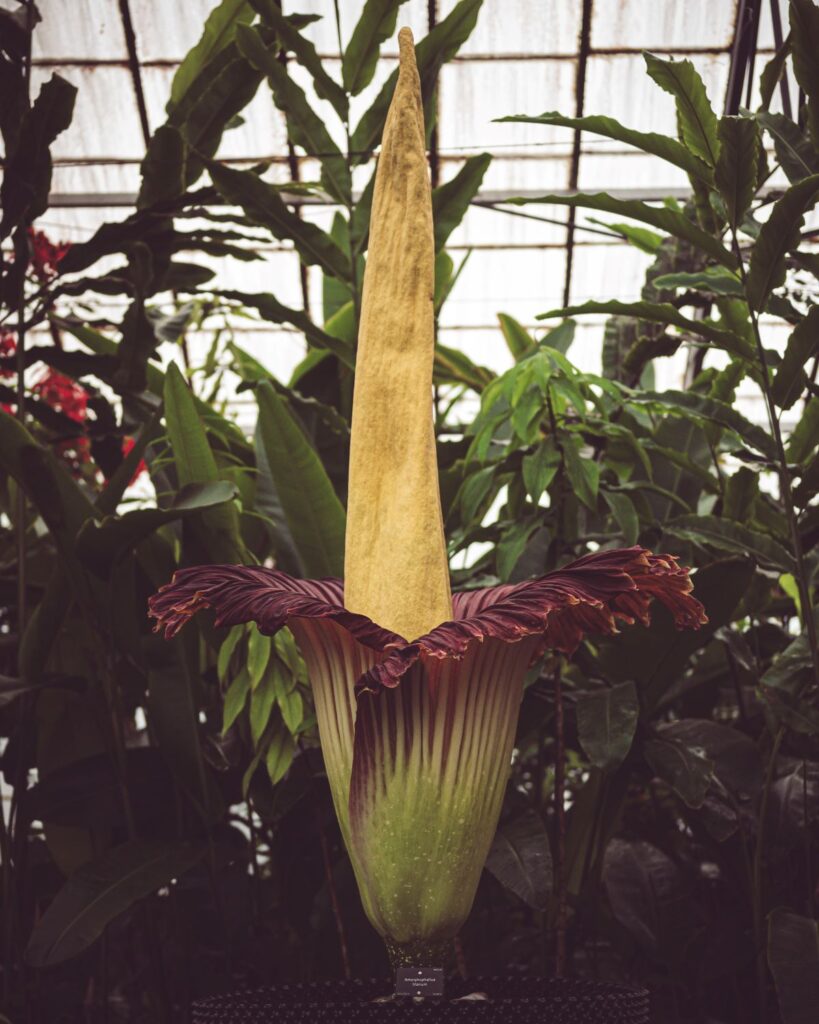Thousands of horticulture enthusiasts are set to gather at Edinburgh’s Royal Botanic Garden to catch a whiff of a rare smelly plant known as the corpse flower.
The titan arum plant, said to be the ‘world’s smelliest’ burst into bloom on Wednesday night and will emit its smell of rotting flesh for several days.
The flower normally only emerges once every two years and draws in huge crowds keen for a whiff of the plant.
Endangered in its native West Sumatra, the Amorphophallus titanum is famously known for its size, smell, and the relative rarity of its bloom.
Amorphophallus is a scientific name, derived from the Ancient Greek and means ‘misshapen penis’. It generally blooms at night and emits a distinctive odour to attract the attention of carrion insects to achieve its pollination.
Thousands of people are expected to flock to the Royal Botanic Garden to see the flower bloom for only the fifth time in Edinburgh.
‘The same plant flowering five times is a rare thing, and is likely a result of us holding what was potentially the world’s largest ever corm,’ Sadie Barber, Research Collections Manager, explained.
‘This fifth bloom of our 22-year-old Amorphophallus titanum brings the story of a magnificent plant to the start of an exciting new chapter.
‘There is still so much to learn about the biology and behaviour of this enigmatic species, to be the guardians of an amazing specimen and its progeny, raised over the years, is to have the ongoing opportunity to learn from them.’
The seed for Edinburgh’s spectacular specimen was sown at Hortus Botanicus Leiden, in the Netherlands, in 2002 and gifted to the Botanics a year later, when it was around the size of a small orange.
When it finally bloomed in 2015, it was a first for Scotland, and possibly had the heaviest corm of any Amorphophallus grown in curated conditions. It flowered again in 2017, 2019 and 2022 – which experts thought would be the last.
Read more Culture stories here.
Subscribe to read the latest issue of Scottish Field.
TAGS


